Social media plays a crucial role in enhancing brand awareness, engagement, and search engine optimization (SEO). By utilizing targeted advertising and interactive content strategies, brands can effectively reach their desired audiences and build meaningful connections. Additionally, the visibility gained through social media can drive traffic to websites, positively influencing search rankings and establishing brand authority.
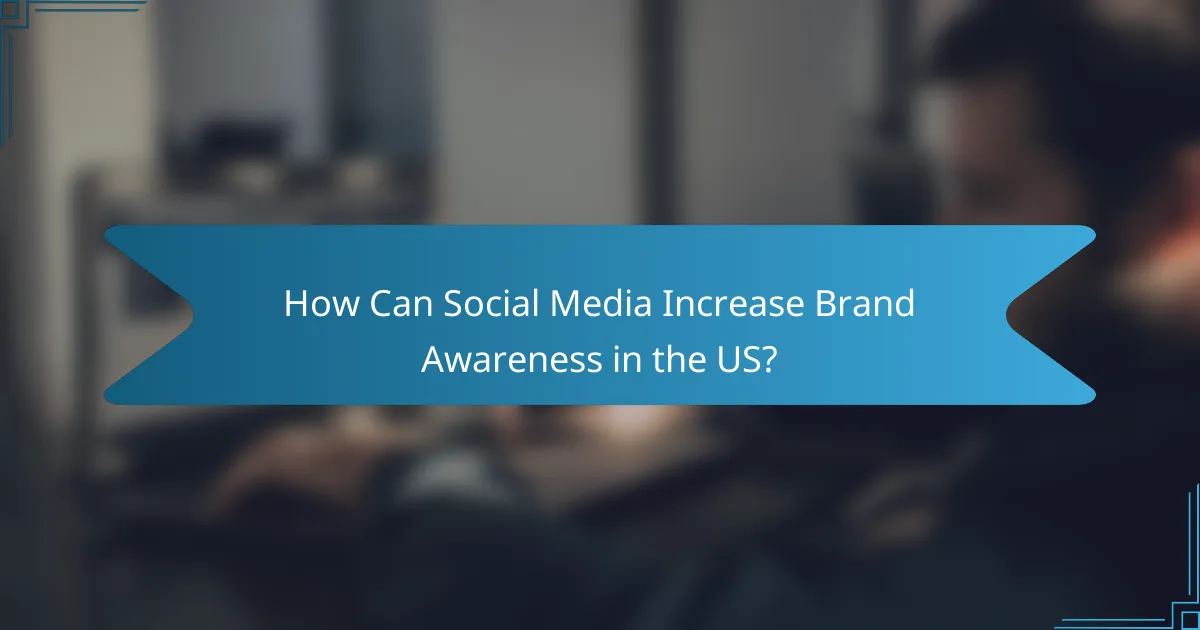
How Can Social Media Increase Brand Awareness in the US?
Social media can significantly boost brand awareness in the US by leveraging targeted advertising, influencer partnerships, and engaging content strategies. These methods help brands reach specific audiences, enhance visibility, and foster community engagement.
Targeted advertising on platforms like Facebook
Targeted advertising on Facebook allows brands to reach specific demographics based on interests, behaviors, and location. This precision helps ensure that marketing messages are seen by potential customers who are most likely to engage with the brand.
Brands can create ads that resonate with their target audience by utilizing Facebook’s robust analytics tools. A/B testing different ad formats and messages can optimize performance, leading to higher engagement rates and better brand recognition.
Influencer partnerships on Instagram
Influencer partnerships on Instagram can amplify brand awareness by leveraging the trust and reach of popular figures. Collaborating with influencers who align with the brand’s values can create authentic connections with their followers.
Brands should choose influencers whose audience matches their target market. Micro-influencers, with smaller but highly engaged followings, can often provide a more cost-effective way to increase visibility and foster genuine engagement.
Content marketing strategies on Twitter
Content marketing on Twitter focuses on sharing valuable information and engaging with followers in real-time. Brands can use Twitter to participate in trending conversations, share updates, and respond to customer inquiries, enhancing their visibility.
Utilizing relevant hashtags and engaging in Twitter chats can help brands reach a broader audience. Regularly posting informative and entertaining content can keep the brand top-of-mind for users, ultimately increasing awareness and loyalty.
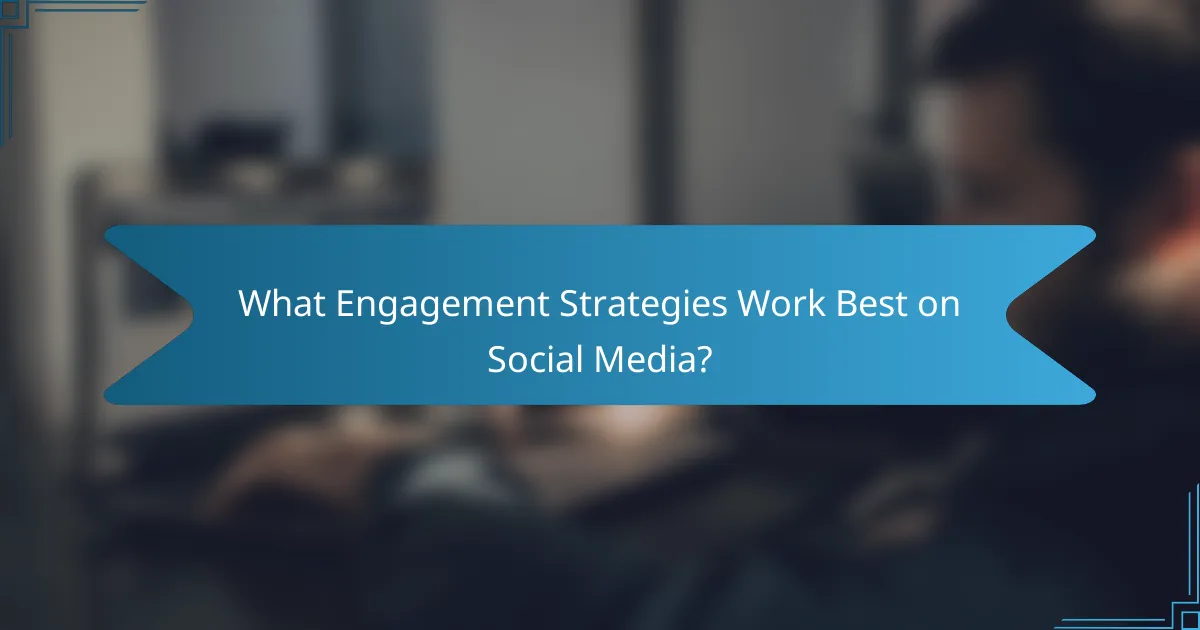
What Engagement Strategies Work Best on Social Media?
Effective engagement strategies on social media include interactive polls and quizzes, live streaming events, and user-generated content campaigns. These methods not only boost brand awareness but also foster a deeper connection with the audience.
Interactive polls and quizzes
Interactive polls and quizzes are a straightforward way to engage your audience. They encourage participation and provide instant feedback, making followers feel involved in your brand’s narrative.
To implement this strategy, consider using tools available on platforms like Instagram and Twitter. Keep questions relevant to your brand and audience interests, and aim for a mix of fun and informative content to maintain engagement.
Common pitfalls include making polls too complex or failing to promote them adequately. Ensure your polls are easy to understand and share them across your social channels for maximum reach.
Live streaming events on platforms like TikTok
Live streaming events on platforms like TikTok can significantly enhance audience engagement. These real-time interactions allow brands to showcase products, host Q&A sessions, or provide behind-the-scenes content, creating a sense of immediacy and connection.
When planning a live event, promote it in advance to build anticipation. Choose a time that aligns with when your audience is most active, and consider incorporating interactive elements like live polls or giveaways to maintain viewer interest.
Avoid long-winded presentations; keep the content engaging and concise to hold viewers’ attention. Aim for a duration of 30 to 60 minutes to strike a balance between depth and viewer retention.
User-generated content campaigns
User-generated content campaigns leverage the creativity of your audience to promote your brand. By encouraging followers to create and share their content related to your products or services, you can enhance authenticity and trust.
To launch a successful campaign, create a specific hashtag and clearly outline the guidelines for participation. Consider incentivizing contributions with contests or features on your brand’s official channels to motivate engagement.
Be mindful of copyright issues; always seek permission before using user-generated content in your marketing materials. This approach not only builds community but also showcases real-life applications of your products, enhancing credibility.
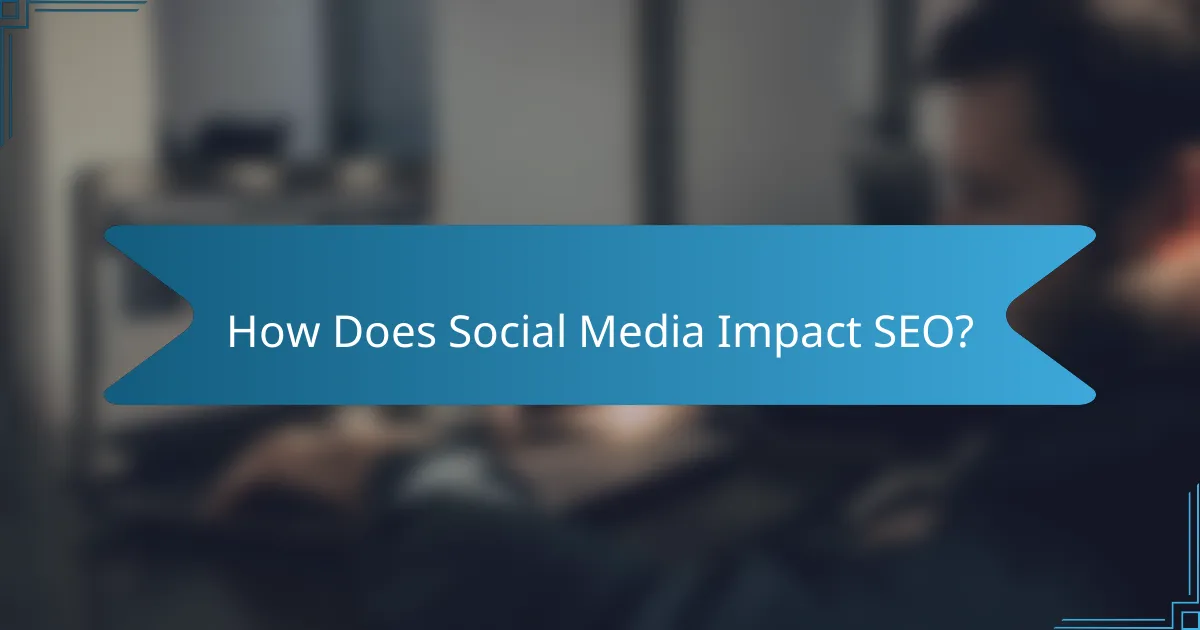
How Does Social Media Impact SEO?
Social media impacts SEO by enhancing visibility and driving traffic to websites, which can lead to improved search rankings. Engaging content shared across social platforms can create a ripple effect, influencing how search engines perceive a brand’s authority and relevance.
Social signals influencing search rankings
Social signals, such as likes, shares, and comments, can indirectly affect search rankings by indicating content popularity and relevance. While search engines like Google do not directly use these signals as ranking factors, high engagement on social media can lead to increased visibility and traffic, which are crucial for SEO.
To leverage social signals, brands should create shareable content that resonates with their audience. Engaging visuals, compelling headlines, and timely topics can encourage users to interact and share, boosting overall online presence.
Content sharing boosting backlinks
When content is shared on social media, it has the potential to attract backlinks from other websites, which are vital for SEO. High-quality backlinks signal to search engines that a site is trustworthy and authoritative, improving its ranking potential.
To maximize content sharing, brands should focus on creating valuable, informative, and entertaining content. Consider using infographics, videos, or expert interviews that are more likely to be shared and linked back to by other creators and websites.
Brand mentions improving visibility
Brand mentions on social media can enhance visibility and recognition, contributing to better SEO outcomes. Even unlinked mentions can create awareness and drive traffic, as users may search for the brand after seeing it discussed online.
To increase brand mentions, engage actively with your audience on social platforms. Respond to comments, participate in discussions, and collaborate with influencers to broaden your reach and encourage more conversations about your brand.
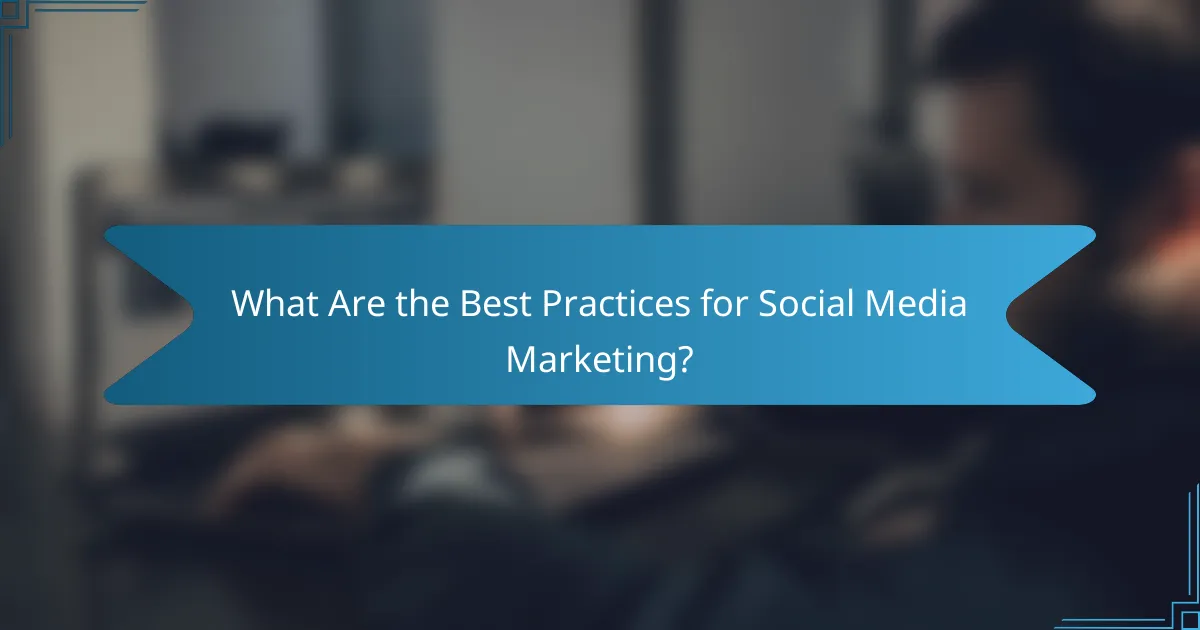
What Are the Best Practices for Social Media Marketing?
Effective social media marketing requires a strategic approach that enhances brand awareness, boosts engagement, and supports SEO efforts. Key practices include maintaining a consistent posting schedule, utilizing engaging visuals, and leveraging analytics for performance tracking.
Consistent posting schedule
Establishing a consistent posting schedule is crucial for keeping your audience engaged and informed. Aim to post regularly, whether daily, several times a week, or weekly, depending on your audience’s preferences and platform norms.
Consider using a content calendar to plan and organize your posts. This helps ensure a steady flow of content and allows you to align your posts with relevant events or promotions. Tools like Hootsuite or Buffer can assist in scheduling posts in advance.
Engaging visuals and multimedia content
Incorporating engaging visuals and multimedia content is essential for capturing attention on social media. Posts with images, videos, or infographics tend to receive higher engagement rates compared to text-only updates.
Utilize high-quality images and videos that reflect your brand’s identity. Short videos or live streams can effectively showcase products or share behind-the-scenes content. Remember to optimize visuals for each platform’s specifications to ensure they display correctly.
Analytics for performance tracking
Utilizing analytics for performance tracking allows you to measure the effectiveness of your social media efforts. Most platforms offer built-in analytics tools that provide insights into engagement rates, reach, and audience demographics.
Regularly review these metrics to identify what types of content resonate with your audience. Adjust your strategy based on this data, focusing on high-performing posts and experimenting with new content types to enhance your overall social media presence.
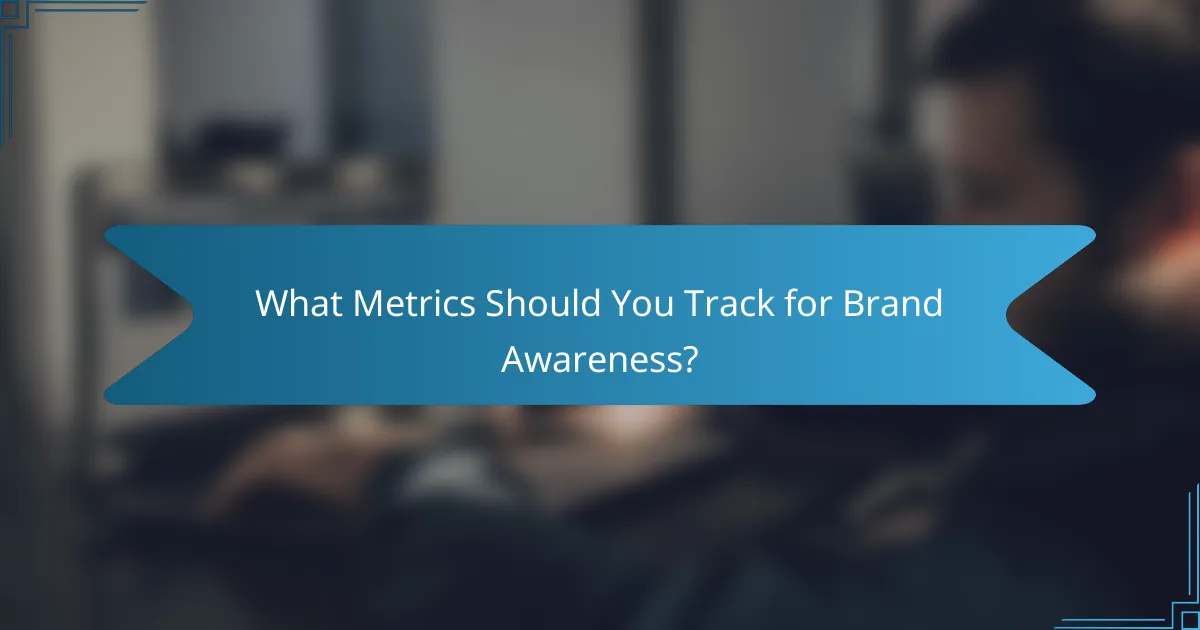
What Metrics Should You Track for Brand Awareness?
To effectively measure brand awareness, focus on metrics that reflect how many people are exposed to your brand and how they interact with it. Key metrics include reach, impressions, engagement rates, and follower growth, each providing insights into your brand’s visibility and audience connection.
Reach and impressions
Reach refers to the total number of unique users who see your content, while impressions indicate how many times your content is displayed, regardless of whether it was clicked. Tracking both metrics helps you understand the breadth of your audience and the frequency of your brand’s exposure.
For example, a post with a reach of 1,000 means 1,000 unique users saw it, whereas if it had 3,000 impressions, it was displayed multiple times to some users. Aim for a healthy balance between reach and impressions to ensure your content is not only seen but also engaging enough to prompt repeat views.
Engagement rate
The engagement rate measures how actively users interact with your content, typically calculated as the total interactions (likes, comments, shares) divided by the total reach or impressions. A higher engagement rate indicates that your audience finds your content relevant and appealing.
For instance, if a post receives 100 interactions from a reach of 1,000, the engagement rate is 10%. Aim for engagement rates in the low to mid-teens for effective brand awareness, as this suggests a strong connection with your audience.
Follower growth
Follower growth tracks the increase in your social media followers over time, reflecting the expanding reach of your brand. A steady growth rate indicates that your content resonates with users, encouraging them to follow for more updates.
Monitor follower growth monthly to identify trends or spikes that may correlate with specific campaigns or content types. A growth rate of 5-10% per month is generally considered healthy, but this can vary by industry and platform.
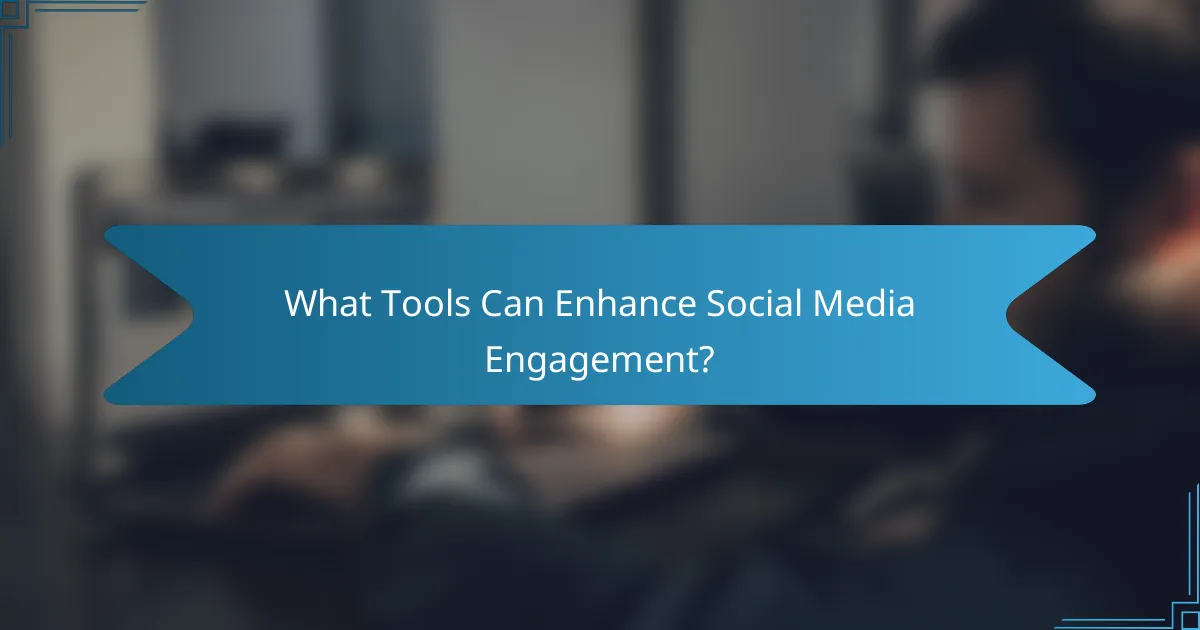
What Tools Can Enhance Social Media Engagement?
Several tools can significantly boost social media engagement by streamlining processes and providing insights. These tools help brands schedule posts, analyze performance, and interact with their audience more effectively.
Hootsuite for scheduling
Hootsuite is a popular social media management tool that allows users to schedule posts across multiple platforms, including Facebook, Twitter, and Instagram. By planning content in advance, brands can maintain a consistent posting schedule, which is crucial for keeping audiences engaged.
When using Hootsuite, consider the optimal times for posting based on your audience’s activity. You can analyze past engagement metrics to determine when your followers are most active, ensuring your posts reach them effectively. Additionally, Hootsuite’s dashboard provides a comprehensive view of all scheduled content, making it easy to manage campaigns.
To maximize Hootsuite’s benefits, avoid over-scheduling, which can lead to a lack of real-time engagement. Instead, balance automated posts with spontaneous interactions to foster a genuine connection with your audience. Regularly review analytics to adjust your strategy based on what resonates best with your followers.
